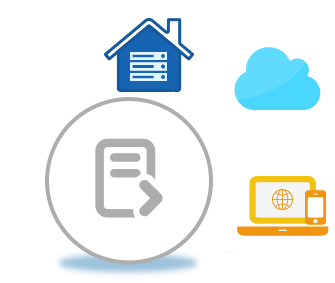Freely View ODT File Online and Load or Read Document via Python
Develop powerful Python based ODT document viewer utility application. Code listed to load or read ODT document through Python.
View ODT Document via Online App
- Import ODT file to view by uploading it.
- Do it by clicking inside the drop area via drag and drop of viewer app.
- Depending on the size of ODT file and internet speed wait for few seconds.
- It will be automatically rendered and opened in the browser for view.
- Navigate between pages in case of multi pages ODT document.
- Set page view zoom-in or zoom-out.
Load or Read ODT File via Python for Viewer App
- Reference APIs within the project directly from PyPI ( Aspose.Words )
- Create document class object and load source ODT file using it.
- Iterate through each node using get_child_nodes to get content for your own developed Viewer app.
- Or Convert the source file to HTML using save method of same API.
- And use subprocess.run to invoke the browser to view ODT file.
Code example in Python to view ODT Files
Python Code to Read Microsoft Word Documents
Python Code : Load Microsoft Word Files
Develop ODT File Viewer Application via Python
Need to develop a ODT viewer app or utility? With
Aspose.Words for Python via .NET
a child API of
Aspose.Total for Python via .NET
, any python developer can integrate the above API code within its document viewer application. Powerful Python library allows programming any document display solution that can support many popular formats including ODT format.
Python utility to process ODT file for display app
There are alternative options to install “
Aspose.Words for Python via .NET
” or “
Aspose.Total for Python via .NET
” onto your system. Please choose one that resembles your needs and follow the step-by-step instructions:
- Install Aspose.Words for Python via .NET from PyPI
- Or Use the following pip commands
pip install aspose.words.
System Requirements
- Python 3.5 or later is installed
- GCC-6 runtime libraries (or later).
- Dependencies of .NET Core Runtime. Installing .NET Core Runtime itself is NOT required.
- For Python 3.5-3.7: The pymalloc build of Python is needed.
For more details please refer to Product Documentation .
FAQs
- Can I use above Python code in my application?Yes, you are welcome to download this code and utilize it for the purpose of developing Python-based document viewer application. This code can serve as a valuable resource to enhance the functionality and capabilities of your projects in the domain of backend document processing such as reading nodes and loading the document for display app.
- Is this online document viewer App work only on Windows?You have the flexibility to initiate viewing documents at any device, irrespective of the operating system it runs on, whether it be Windows, Linux, Mac OS, or Android. All that's required is a contemporary web browser and an active internet connection.
- Is it safe to use the online app for viewing ODT document?Of course! The output files generated through our service will be securely and automatically removed from our servers within a 24-hour timeframe. As a result, the display links associated with these files will cease to be functional after this period.
- What browser should to use App?You can use any modern web browser like Google Chrome, Firefox, Opera, or Safari for online ODT document viewer. However, if you're developing a desktop application, we recommend using the Aspose.Total document processing API for efficient management.
Explore File Viewer Options with Python
What is ODT File Format?
ODT is a file format used for storing documents in the Open Document Format (ODF). ODT stands for Open Document Text. It is the default file format for word processing documents created by applications such as LibreOffice, OpenOffice, and Apache OpenOffice.
ODT files are based on XML, which is a markup language used for organizing and structuring data. They are designed to be an open and interoperable format, allowing users to create, edit, and share documents across different software applications and platforms.
The ODT format supports a wide range of features and formatting options commonly found in word processing documents. It includes support for text styling, paragraphs, tables, images, hyperlinks, headers and footers, footnotes, and more. ODT files can also contain embedded objects and multimedia elements.
One of the key advantages of the ODT format is its compatibility with different software applications. Users can create an ODT document in one word processing application and open it in another without losing formatting or content. This promotes collaboration and ensures that documents can be accessed and edited by users who may be using different software.
ODT files can be easily converted to other popular document formats, such as Microsoft Word’s DOCX format or PDF, for wider compatibility and sharing purposes. Additionally, the ODT format is designed to be future-proof, allowing for long-term preservation and accessibility of documents.
